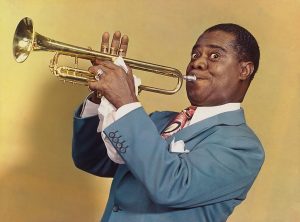Gypsy in My Soul
Barney Kessel
In Charlie Christian’s Foot steps
Click here to Support Jazz on the Tube
Barney Kessel (October 17, 1923 – May 6, 2004) was an American jazz guitarist hailing from Muskogee, Oklahoma, USA. He left an indelible mark on the world of jazz and music in general, being not only a prolific performer but also a highly sought-after guitarist for studio, film, and television recording sessions. Kessel’s versatile talents made him an integral member of the group of esteemed session musicians famously known as “The Wrecking Crew.”
Kessel embarked on his musical journey as a teenager, touring with local dance bands before ascending to more prominent bands, including one led by Chico Marx. He rapidly established himself as a prominent jazz guitarist in the post-Charlie Christian era. Notably, in 1944, he played a part in the film “Jammin’ the Blues,” alongside the likes of Lester Young. In 1947, he recorded with Charlie Parker’s New Stars during the “Relaxin’ at Camarillo” session for Dial Records, a moment captured on the compilation “Charlie Parker on Dial.” Kessel’s mastery led him to be ranked as the #1 guitarist in polls conducted by Esquire, Down Beat, and Playboy magazines, spanning from 1947 to 1960.
Barney Kessel’s innovative contributions extended into the guitar trio setting. In the 1950s, he released a series of albums titled “The Poll Winners,” featuring Ray Brown on bass and Shelly Manne on drums. He notably played guitar on Julie London’s iconic rendition of “Cry Me a River.” During the 1950s, his three-volume collection, “Kessel Plays Standards,” showcased some of his most refined work.
Kessel also briefly held a position in the Oscar Peterson Trio, alongside Ray Brown, departing in 1953. This role was known as one of the most demanding in show business, as Peterson’s penchant for high-speed tempos posed a unique challenge. Herb Ellis took Kessel’s place in the trio. Kessel’s musical journey also intersected with Sonny Rollins in the late 1950s, and his guitar work can be heard on the “Sonny Rollins And The Contemporary Leaders” album, particularly on tracks like “How High the Moon.”
As a “first call” guitarist at Columbia Pictures, Kessel’s talent made him one of the most sought-after session guitarists in the 1960s, a crucial member of the famed group of first-call session musicians, often referred to as “The Wrecking Crew.” In this role, he left his mark on countless pop recordings, contributing to albums and singles by iconic artists like Phil Spector, The Beach Boys, The Monkees, and many more. He even made a brief appearance as an actor, playing the role of “Barney,” a jazz guitarist, in an episode of the Perry Mason TV show. Kessel also had the creative role of writing and arranging the source music, including a jazz rendition of “Here Comes the Bride,” performed by the jazz ensemble that featured in the storyline.
In 1961, The Gibson Guitar Corporation introduced “The Barney Kessel” model guitar to the market, a testament to his influence on the instrument. The production continued until 1973. Notably, Kessel played a custom instrument that combined a 12-string guitar neck with a mandolin body, which may have been featured in the intro of The Beach Boys’ “Wouldn’t It Be Nice.”
Throughout the 1970s, Kessel shared his knowledge through the seminar “The Effective Guitarist,” conducted in various locations around the world.
Kessel’s musical legacy extended to his sons, David and Daniel, who also became session musicians, collaborating with Phil Spector during the 1970s. He was married to B. J. Baker.
In a musical homage to Kessel, Pete Townshend included the instrumental track “To Barney Kessel” on his 1983 album “Scoop.”
Barney Kessel continued to release solo albums even in the later stages of his life.
Tragically, Kessel succumbed to a brain tumor in San Diego, California. His health had been in decline following a stroke he suffered in 1992.


